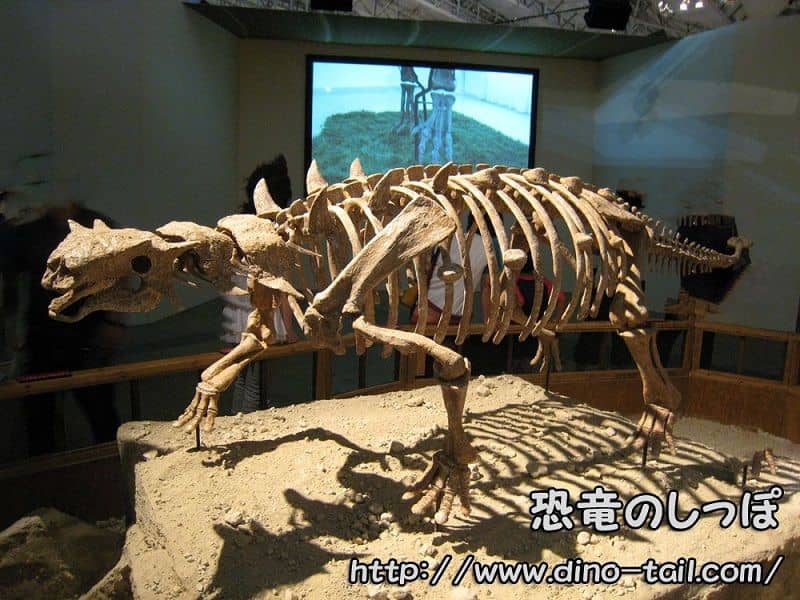About Pinacosaurus
| Scientific Name (Genus) | Pinacosaurus |
| Meaning of Name |
Plank lizard
pinako (plank) [Greek] - saurus (lizard) [Greek] |
| Classification | Ornithischia, Thyreophora (Ankylosauria, Ankylosauridae) |
| Total Length | Approx. 5.5m |
| Diet | Herbivorous |
| Period | Late Cretaceous (approx. 80-75 million years ago) |
| Species | Pinacosaurus grangeri (type species) |
| Year of Paper Publication | 1933 |
| Description Paper |
Two new dinosaurian reptiles from Mongolia with notes on some fragmentary specimens.
American Museum novitates ; no. 679. by Gilmore, Charles W. 1933. |
Features
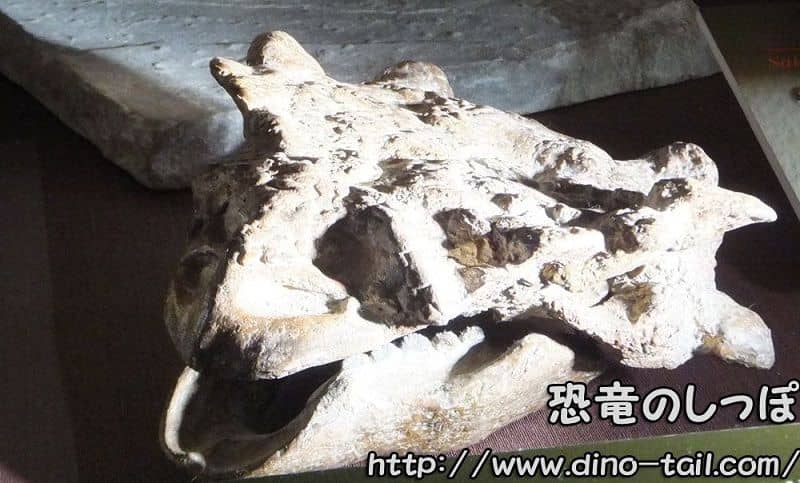
Pinacosaurus was a medium-sized ankylosaur that has been found in large numbers. It lived during the Late Cretaceous period (80-75 million years ago).
Pinacosaurus had bony projections on its head and a club at the end of its tail. The tail club was smaller than that of Ankylosaurus. It had 14 teeth in its upper jaw, and its most distinctive feature was a series of extra openings around its nose, not seen in any other dinosaur.
The function of these strange openings is still a mystery, but because they lived in arid desert regions, it has been proposed that they may have housed salt glands to excrete excess salt from the body. It is also possible that they were resonance chambers for complex vocalizations.
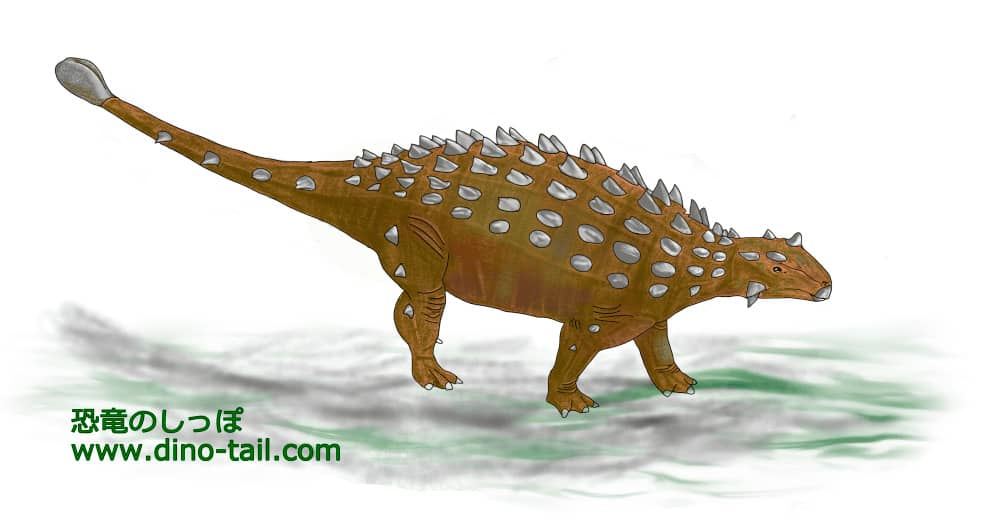
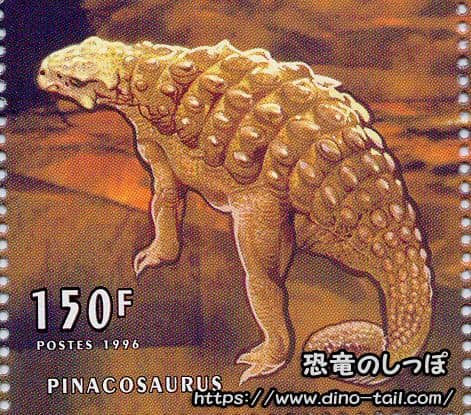
It has been excavated from the same geological formations as Protoceratops and Velociraptor, and is thought to have inhabited dune environments.
Because juvenile fossils have been found together, it is possible that they lived in social groups. The tail club was not developed in juveniles. Also, no bony armor has been found on juvenile fossils of about two meters in length. It is thought that this armor developed as they grew into adults.
The Desert 'Dinosaur Nursery' and a Tragedy
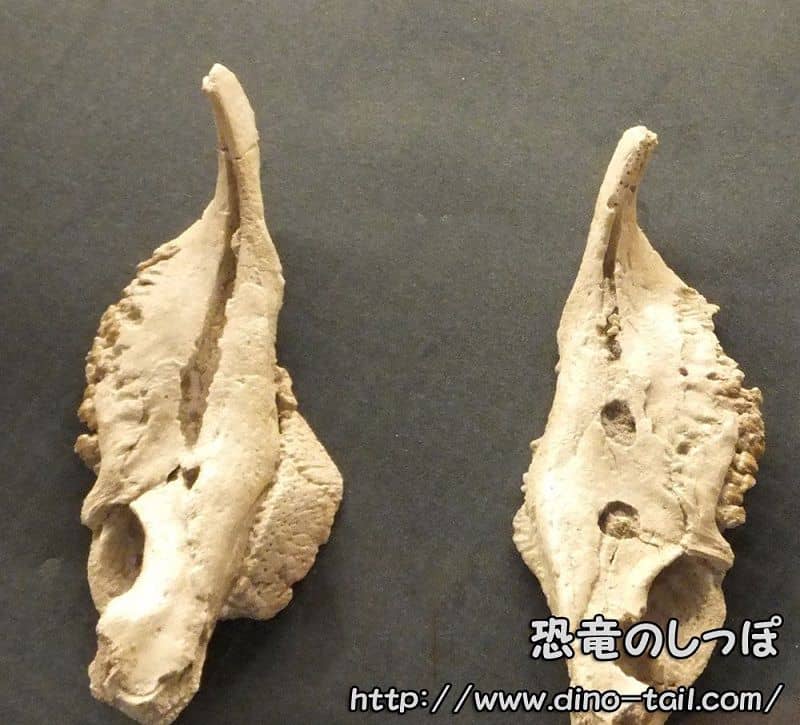
The small teeth characteristic of ankylosaurs are lined up.
The most important evidence regarding the ecology of Pinacosaurus is a bonebed of only juveniles discovered in the Gobi Desert.
In one location, the skeletons of dozens of young Pinacosaurus were discovered piled on top of each other. Surprisingly, there were no adult individuals in these groups. From this, it is considered highly likely that the young of Pinacosaurus formed 'crèches' of only juveniles and lived in groups, separate from the adults. This is an advanced social behavior, also seen in modern ostriches, for protection against predators.
The reason they died together lies in the desert environment they inhabited. From the way the bones were buried, it is presumed that they were caught in a severe sandstorm and were buried alive in an instant. This tragic event has preserved for us a time capsule of what a prehistoric 'dinosaur nursery' was like.
Discovery and Description Paper
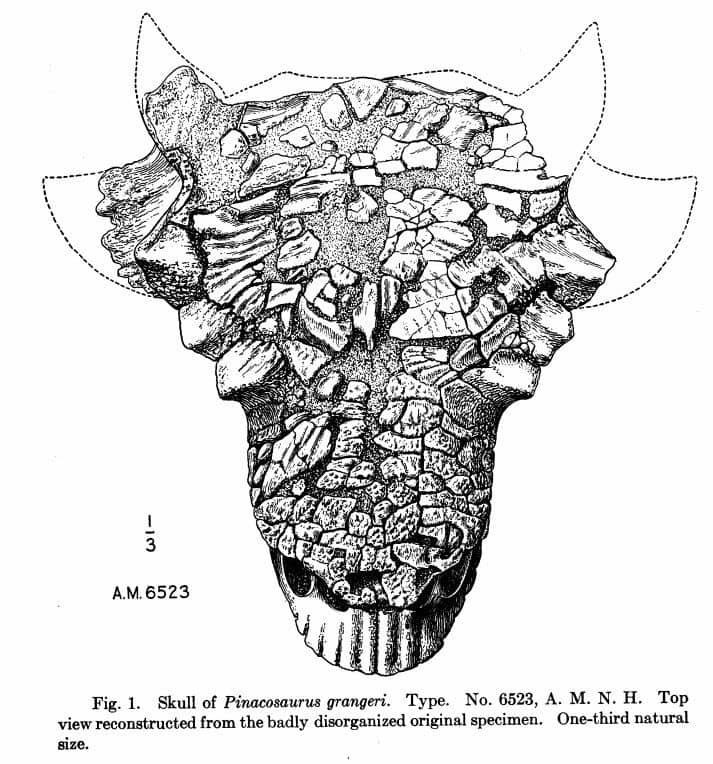
Source: Two new dinosaurian reptiles from Mongolia with notes on some fragmentary specimens.
American Museum novitates ; no. 679.
by Gilmore, Charles W. 1933.
In the 1920s, the American Museum of Natural History conducted an expedition to the Gobi Desert in Mongolia. In 1923, they discovered a right ilium and caudal vertebrae believed to belong to an ankylosaur. In 1933, the American paleontologist Charles W. Gilmore only introduced this specimen without giving it a genus name in a paper published in November titled 'THE DINOSAURIAN FAUNA OF THE IREN DABASU FORMATION.' However, in December of the following month, in the paper 'Two new dinosaurian reptiles from Mongolia with notes on some fragmentary specimens,' he named the new genus Pinacosaurus based on a skull (incidentally, the saurischian 'Mongolosaurus haplodon' was also described in the same paper).
Since the American Museum of Natural History's expedition, fossils including juveniles have been discovered in Central Asia.
Pinacosaurus Stamp & Fossil Gallery
